Fort-Louis to Gambsheim
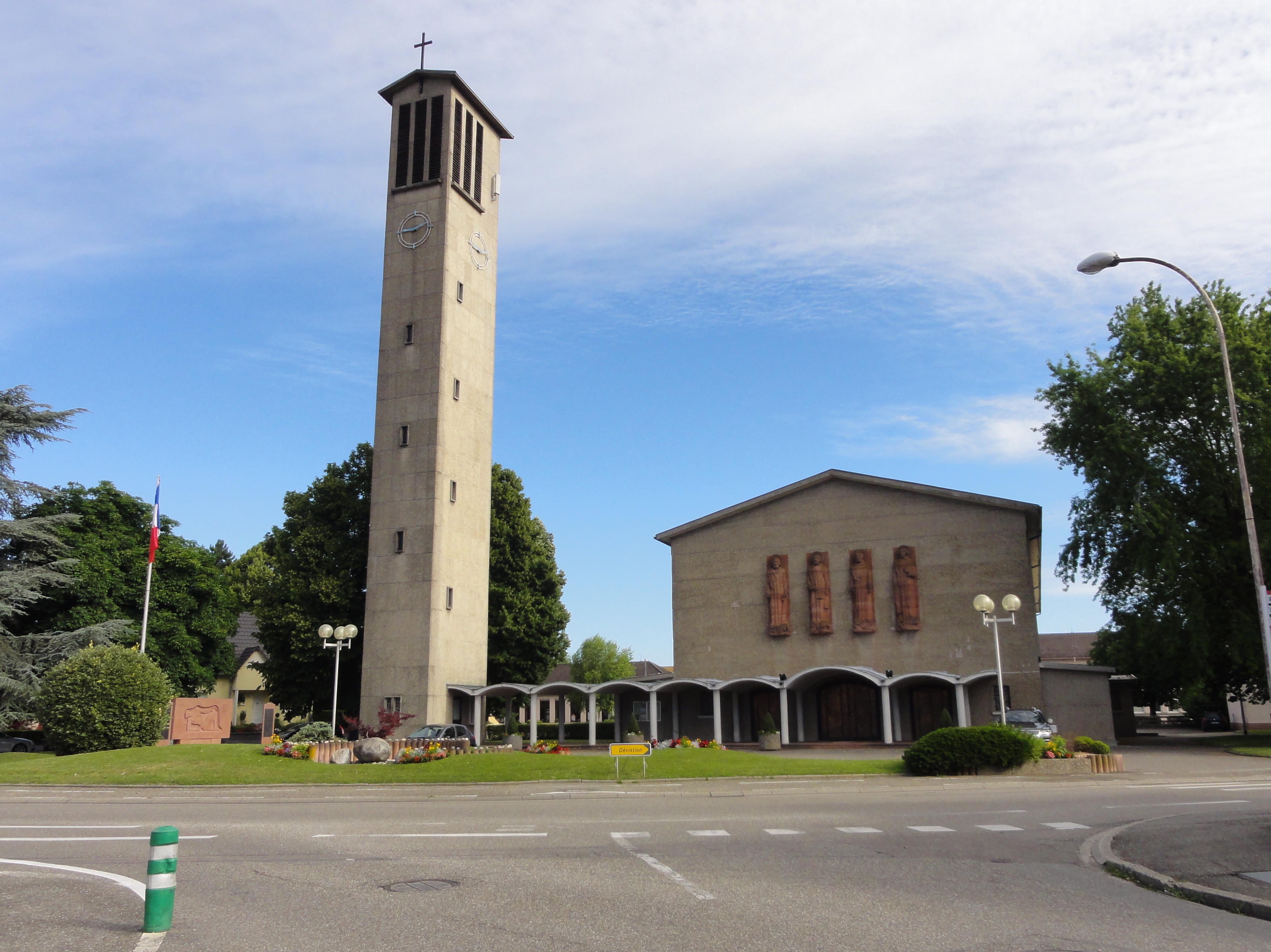
Grand Est
2. Fort-Louis to Gambsheim
Medium
5h30
21,7km
+138m
-129m
Step
Embed this item to access it offline
Your day begins by crossing a natural area and continues as the Rhine flows between forest and wetland vegetation.
7 points of interest
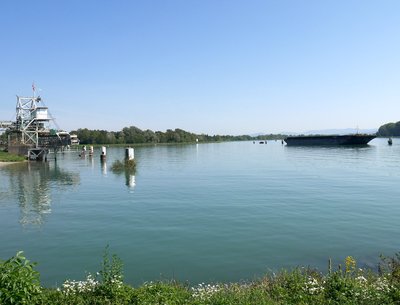
Port de Fort-Louis avec sa rampe de chargement - Les Amis de saint Colomban PanoramicPort of Fort-Louis
Der Autonome Hafen Straßburg verwaltet die verschiedenen Handelshäfen, die sich entlang des Rheins über fast 100 km von Marckolsheim im Süden bis Lauterbourg im Norden erstrecken, mit dem Haupthafen in Straßburg im Zentrum. Diese Häfen verfügen über Land, das die Entwicklung wirtschaftlicher Aktivitäten ermöglicht, aber auch über Hafeninfrastrukturen, die das Be- und Entladen von Massengütern oder containerisierten Produkten ermöglichen und einen echten Mehrwert für die Verwaltung des Warenflusses für Unternehmen darstellen.
Die beiden Häfen von Fort-Louis sind auf die Verladung von Materialien aus Kiesgruben spezialisiert.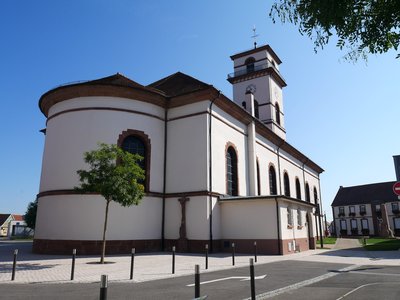
Église Saint-Matthieu à Drusenheim - Les Amis de saint Colomban TouristSt. Matthew's Church in Drusenheim
The present religious building was built in 1835, in a neo-classical style, according to the plans of the architect Samain. The place of worship was consecrated in 1837. During the Second World War, the building suffered extensive damage and restoration work was undertaken.
Église Saint-Arbogast à Herrlisheim - Les Amis de saint Colomban TouristSaint-Arbogast Church in Herrlisheim
Several churches have been built on this site since the 14th century. Just before the Revolution a new building was completed. It was destroyed during the Second World War. A new church was built between 1965 and 1968, it is the present church which is well in the style of the 20th century.
Saint Arbogast was bishop of Strasbourg in the second half of the 7th century. He built Strasbourg's first cathedral, which he consecrated to Notre-Dame, on a site used by Christians since the 4th century after having been a Roman sanctuary.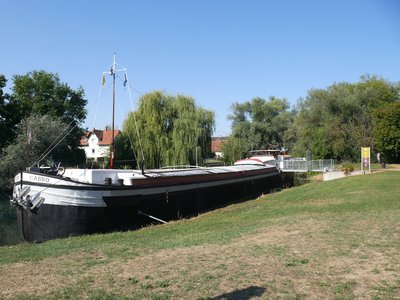
La péniche musée à Offenborf - Les Amis de saint Colomban HistoricalInland shipping museum in Offendorf
The Offendorf Inland Navigation Museum pays homage to the Rhine boatmen of the 20th century. Families owned one or two barges and had a pied à terre like here in Offendorf. Their activity reached its peak around 1960 with 600 people, i.e. a third of the village's population, but then declined and became a virtually extinct profession.
From 72 B.C. to 453 B.C., the Rhine was a frequently used route for the enemy to enter Alsace. However, it was not until the 8th century that navigation on the Rhine underwent a major change. Trade on the water developed under Charlemagne, who granted the subjects of the Church of Strasbourg customs privileges, including exemptions from tolls.
One of the main ports was located at the confluence of the River Ill, which crosses Alsace from south to north, and the Rhine. Probably used as early as Roman times, the port acquired great importance in the Middle Ages, and no doubt explains the extraordinary wealth of Honau Abbey, founded by Irish monks, which seems to have controlled this passage of the Rhine and the mouth of the Ill.
The Treaties of Westphalia (1648) proclaimed the freedom of navigation on the Rhine. In 1729, the Strasbourg boatmen were granted the privilege of navigation between Strasbourg and Basel. The French Revolution abolished the corporation and proclaimed free movement on the Rhine.
Between 1930 and 1970, French inland waterway transport operated with Freycinet gauge barges (250 to 350 tonnes) and then the Rhine gauge barges, whose capacity was 10 times greater, took control of economic traffic on the Rhine.
Cabro Offendorf Museum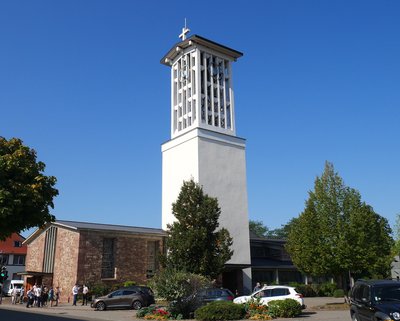
Église Saint-Pierre, Saint-Paul et Sainte Brigide d’Offendorf. - Les Amis de saint Colomban TouristChurch of St. Peter, St. Paul and St. Brigid in Offendorf
The Offendorf church was rebuilt in 1962, replacing a 19th century building destroyed during the bombings of the Second World War.
All the furniture has been replaced and it is one of the first churches in Alsace to conform to the Second Vatican Council.
The dedication to Saint Brigid of Kildare, abbess of the monastery of Kildare in Ireland, is probably very old. In the 8th century Irish monks founded a monastery north of Strasbourg, the monastery of Honau, on fertile but floodable land which caused the abandonment of the site. They had brought the cult of St. Brigid, who is one of the three Saints of Ireland along with St. Patrick and St. Colomba de Iona or Columkill.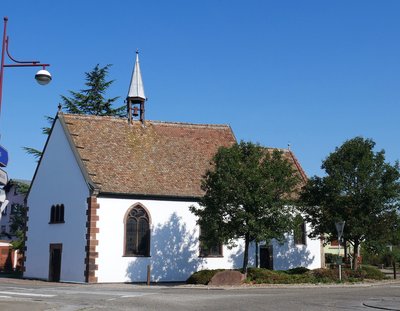
Chapelle Saint-Quirin et Saint-Wendelin à Gambsheim - Les Amis de saint Colomban TouristSt. Mary's Chapel in Gambsheim
Situated on the edge of Via Columbani, the chapel of Santa Maria is already mentioned in 1347.
Its legendary origin places it at the crossroads of important roads at the northern exit of the town.
After its abandonment during the Revolution the chapel was restored and given back to Catholic worship in 1806, it will be under the names of Saint-Quirin and Saint-Wendelin.
Wendelin is said to have been born in 554, son of King Scot Forchado and Queen Irelina. He lived with the Benedictines of Trier and, according to legend, became the abbot of Tholey in 597. Wendelin died in 617 and is buried in his cell.
His cult in Alsace was probably brought by Irish monks from the monastery of Honau a few kilometres away.
Église Saint-Nazaire et Celse à Gambsheim - Les Amis de saint Colomban TouristSaint-Nazaire and Celse Church in Gambsheim
The Church of Saints Nazaire and Celse was built under the direction of the architect Fernand Guri in the mid-1950s. The old building, built in 1763 in the Baroque style, had not withstood the bombings of the Second World War.
Separated from a 38-metre-high campanile, it forms a large vessel consisting of a succession of eight bays and is flanked by narrow aisles. The stained glass windows made by Werlé, from Haguenau, increase in size as you move towards the choir.
On the south-facing main façade, the four Evangelists and their symbols, the work of the statuesque artists Stentzel and Stoll, are depicted in the form of sculptures. From left to right you can recognize the evangelists Matthew with the angel, Mark with the winged lion, Luke with the winged bull, and John with the eagle. These sculptures would have been designed and created from 1960 onwards.
Source: Archi-Wiki
Description
Departure: Saint Louis church rue du Pralon, right rue des remparts, left rue Jean Sadoul, right rue de Stattmatten continue on the road to La Moder, stay on the main road to go around the pond towards the Rhine, follow the Rhine.
- Turn right at the crossroads with D 429 into Drusenheim rue du Rhin,
- Turn left at the roundabout, rue du Général de Gaulle D 468 towards Herrlisheim, take the cycle track, in Herrlisheim, rue de Drusenheim, rue Saint-Arbogast
- Second street on the left in front of the town hall in Offendorf, left and right in Offendorf, route de Herrlisheim D 29, quai Joseph Zolliox, right in Rue Principal, route de Gambsheim. In Gambsheim, route d'Offendorf you will arrive in front of the church of Gambsheim.
- Departure : Saint-Louis Church, 1 rue Pralon, 67 480 Fort-Louis
- Arrival : Saint-Nazaire and Celse Church, 105 route Nationale, 67 760 Gambsheim
- Towns crossed : Grand Est
Altimetric profile
Report a problem or an error
If you have found an error on this page or if you have noticed any problems during your hike, please report them to us here:



